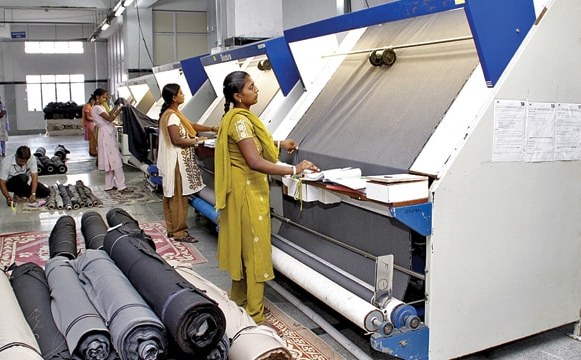What is Fabric Inspection?
Fabric inspection is the process of examining textile materials or fabrics to ensure that they meet certain quality standards and specifications. It involves a thorough examination of the fabric for defects, such as holes, stains, tears, or color inconsistencies.
The inspection process may be done at different stages of fabric production, including the raw material stage, the weaving stage, or after the fabric has been finished. It is an important part of quality control in the textile industry, as it helps to ensure that the fabric meets the required standards before it is used to make garments or other products.

It is the responsibility of both the textile supplier and garment manufacturer to inspect all textiles to ensure their compliance with the buyer standard. Textile which are being exported to another country for use in the assembly of a finished product are required to be inspected by the buyer’s designed inspection service prior to shipment. Once requested, it is the sole responsibility of the textile supplier to ensure that the textiles are inspected prior to shipment. For textiles which are to be assembled in the country of textile origin, inspection is required only if requested by the buyer.
Fabric Control System in Textile Industry:
Fabric control system is a set of procedures and equipment used to ensure that the fabric meets the desired quality standards during production. It is implemented throughout the textile manufacturing process to monitor and control the quality of the fabric being produced.
The fabric control service will be divided in the following subgroups:
1. Pre-control:
“Feel” examination, appearance, verification of any unpleasant odorous, colors, shades, weight, listing and ending; verification of dye uniformity between center and selvedge by means of a special fabric strip “sleeve” and dimensional checking by means of a steam test, production of the shade continuity cards.
2. Control:
All textile inspections will be conducted in accordance with the 4 point system. The control consists in checking of fabrics on appropriate machines, permitting complete tension free sliding and measuring of the fabric.
The pieces will always be processed in rolls or humpback, never folded in order to avoid permanent creases in the fabric.
Tension free measuring will be carried out electronically with or without metric labeling on the selvedge and the accuracy will be guaranteed with a maximum approximation of 0.5%. Measuring will be expressed in yards.
References for pattern and finishing will be certified by a fabric swatch indicated by the garment conductor, colors by colors chart/shade chart. This sample will be reference sample taken from the first delivery of the production or a sample taken from a sample piece. Sample dimensions will be such as to permit verification of all characteristics, pattern, colors, etc. of the fabric to be inspected.
Conclusion:
Fabric inspection and control are two interconnected processes that are crucial in the textile industry. Fabric inspection is the examination of textile materials to ensure that they meet certain quality standards and specifications, while fabric control is the process of monitoring and regulating the production of fabric to ensure consistent quality. The ultimate goal of fabric inspection and control is to produce high-quality fabric that meets the needs and expectations of customers.
You may also like: 4 Point System for Fabric Inspection with Example
